Years of service 1912–1943 Spouse Paula Lutze (m. ?–1943) | Name Viktor Lutze | |
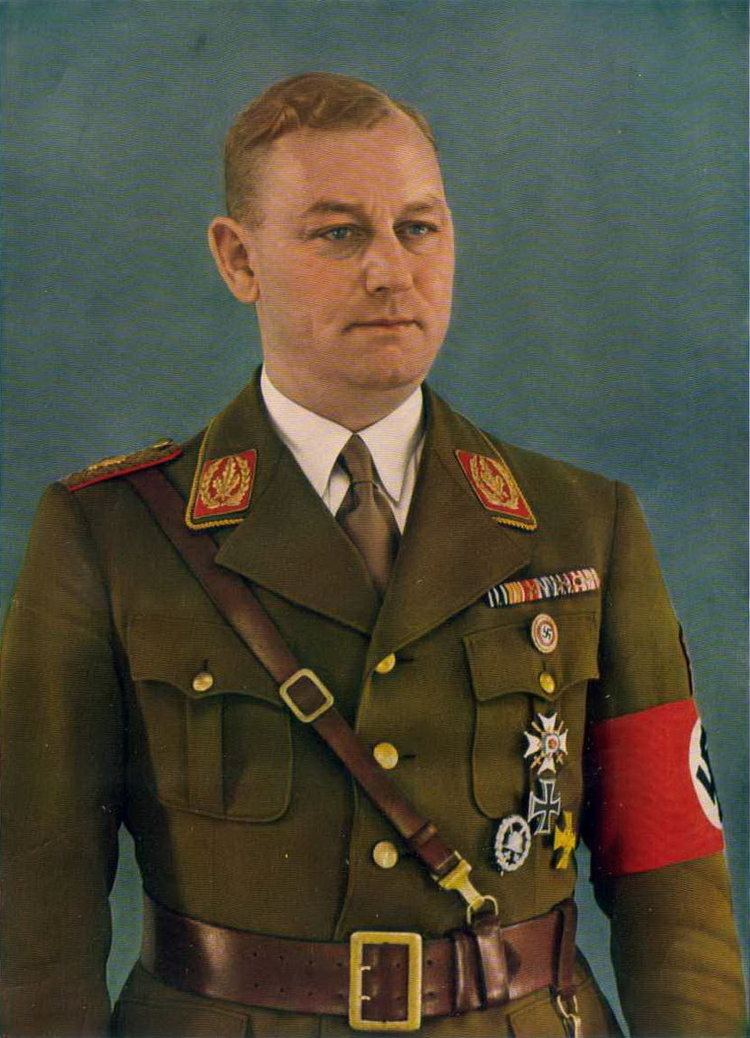 | ||
Service/branch German ArmySturmabteilung (SA) Children Viktor lutze Jr., Addi Lutze Similar People Hermann Goring, Stanley Kubrick, Malcolm McDowell, Mick Jagger, Anthony Burgess | ||
Viktor Lutze (28 December 1890 – 2 May 1943) was the commander of the Sturmabteilung ("SA") succeeding Ernst Röhm as Stabschef. He died from injuries received in a car accident. Lutze was given an elaborate state funeral in Berlin on 7 May 1943.
Contents
- Early life
- Nazi Party and SA
- Purge of Rhm
- Foreign organisation
- Lutzes death and funeral
- Family life
- References
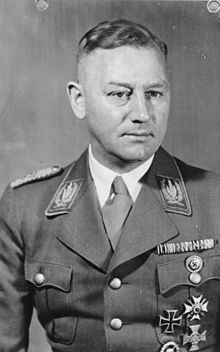
Early life
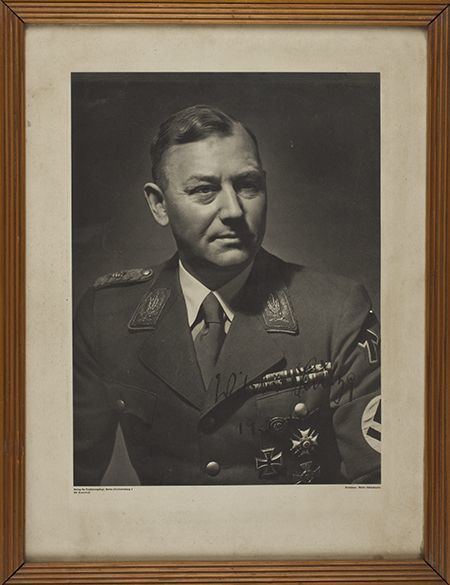
Lutze was born in Bevergern, Westphalia, in 1890. He later joined the German Army in 1912, and obtained officer rank. He served with the 55th Infantry Regiment. He fought in the 369th Infantry Regiment and 15th Reserve Infantry Regiment during the First World War. Thereafter, Lutze became a merchant and joined the police force.
Nazi Party and SA
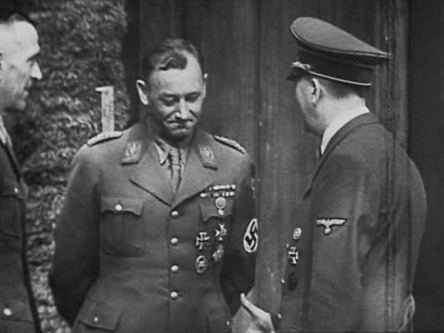
Lutze joined the National Socialist German Workers Party (NSDAP; Nazi Party) in 1922, and the SA in 1923. He became an associate of Franz Pfeffer von Salomon, the first leader of the SA. Together, they determined the structure of the organisation.
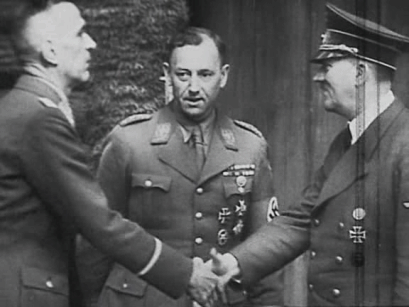
He also worked with Albert Leo Schlageter in the resistance/sabotage of the Belgian and French occupation of the Ruhr in 1923. He became the deputy Gauleiter for the Ruhr in 1926. His organization of the Ruhr for the SA became a model for other regions. In 1930, he was elected to the Reichstag as a representative for Hannover-Braunschweig. In October 1931, he organized a huge joint rally in Braunschweig (Brunswick) of SA and SS men to show both strength in strife-weary Germany and loyalty to their leader, Adolf Hitler. This was before Hitler came to national power as Chancellor of Germany in January 1933. Over 100,000 men attended the rally hosted by SA-Gruppe Nord under the leadership of Lutze. At the rally, the SA assured Hitler of their loyalty and Hitler in turn increased the size of the SA with the creation of 24 new Standarten (regiment-sized formations). Hitler never forgot this show of loyalty by Lutze. A badge was made to commemorate the event. Lutze rose through the ranks and by 1933 was a SA-Obergruppenführer. In March 1933, he was appointed police president of Hanover and later its provincial governor and state counselor.
Purge of Röhm
Lutze's participation in the Night of the Long Knives in 1934 was very important: he informed Hitler about Ernst Röhm's anti-régime activities. In preparation for the purge, both Heinrich Himmler and his deputy Reinhard Heydrich, chief of the SS Security Service (SD), assembled dossiers of manufactured evidence to suggest that Röhm planned to overthrow Hitler. Meanwhile, Göring, Himmler, Heydrich and Lutze (at Hitler's direction) drew up lists of those who should be liquidated, starting with seven top SA officials and including many more. The names of eighty-five victims are known; however, estimates place the total number killed at up to 200 persons. After the purge Lutze succeeded Röhm as Stabschef SA, but after the Night of the Long Knives, the SA no longer had as prominent a role as it had in the early days of the party. Lutze's major tasks included overseeing a large reduction in the SA, a task welcomed by the SS and by the regular armed forces. On 30 June 1934 Hitler issued a twelve-point directive to Lutze to clean up and re-organize the SA.
At the Nazi Party Congress in Nuremberg in September 1934, William L. Shirer observed Hitler speaking to the SA for the first time since the purge (Hitler absolved the SA from crimes committed by Röhm). Shirer also noted Lutze speaking there (Lutze reaffirmed the SA's loyalty). Shirer described Lutze as possessing a shrill unpleasant voice, and thought the "SA boys received him coolly". Leni Riefenstahl's film Triumph of the Will, however, shows the SA mobbing Lutze as he departs at the end of his evening rally speech. His automobile can barely make it through the crowd. Alone among the speakers (apart from Hitler) Lutze receives the dramatic low-angle shots while standing solo at the podium. Only Hitler, Himmler, and Lutze are shown in the march to the World War I cenotaph, where they lay a wreath. The makers of the film give the then little-known Lutze some of the prestige of a party leader, so as to draw attention away from their recent leader, Ernst Röhm. The latter appeared often by the side of Hitler in the previous Riefenstahl film of the 1933 party congress Der Sieg des Glaubens, but that film was withdrawn from circulation and all prints known to the Nazi officials were eradicated after his murder; the film is known today from a copy found in Britain in the 1990s.
Foreign organisation
After the Anschluss, Lutze traveled to Austria to help reorganise the SA there.
In September 1938, SA Stabschef Lutze travelled to Passau to welcome Nazis who had returned from the Reichsparteitag in Nuremberg. Lutze stayed at "Veste Oberhaus" and seized the opportunity to meet Johann Nepomuk Kühberger, who had once helped to save Hitler from drowning in the Inn river. Now, he was a priest, and played the organ at Passau cathedral.
The reintroduction of military conscription in 1935 reduced the size of the SA significantly. Its most visible role after the purge was in assisting the SS in perpetrating the Kristallnacht in November 1938. In February 1939, Lutze reviewed a parade of 20,000 Blackshirts in Rome and then set off for a tour of Italy’s Libyan frontier with Tunisia.
Lutze's death and funeral
In January 1939, the role of the SA was officially mandated as a training school for the armed forces with the establishment of the SA Wehrmannschaften (SA Military Units). Then in September 1939 with the start of World War II in Europe, the SA lost most of its remaining members to military service in the Wehrmacht (armed forces). Lutze maintained his position in the weakened SA until his death. On 1 May 1943 he was driving a car near Potsdam with his entire family. Driving too fast on a curve caused an accident that badly injured Lutze as well as killing his oldest daughter Inge and greatly injuring his younger daughter. Viktor Lutze died during an operation in a hospital in Potsdam the next evening. News reports stated that the accident involved another vehicle, keeping the news of reckless driving from the public. Hitler ordered Joseph Goebbels to convey his condolences to Viktor's wife Paula and son Viktor, Jr. Goebbels, in his diaries, had already described Lutze as a man of "unlimited stupidity" but at his death decided he was a decent fellow. Lutze was 52 years old.
Hitler ordered a lavish state funeral on 7 May 1943, to take place in the Reich Chancellery. Hitler attended in person, something he rarely did at that stage in the war, and posthumously awarded Lutze the highest award of the Nazi Party, the German Order, 1st Class. Thereafter, Hitler appointed Wilhelm Schepmann to succeed Lutze as Stabschef SA, but by that time the organization had been thoroughly marginalized.
Family life
Pictures found in Lutze's house by the Allies depict a family man who enjoyed day-trips and table tennis.
